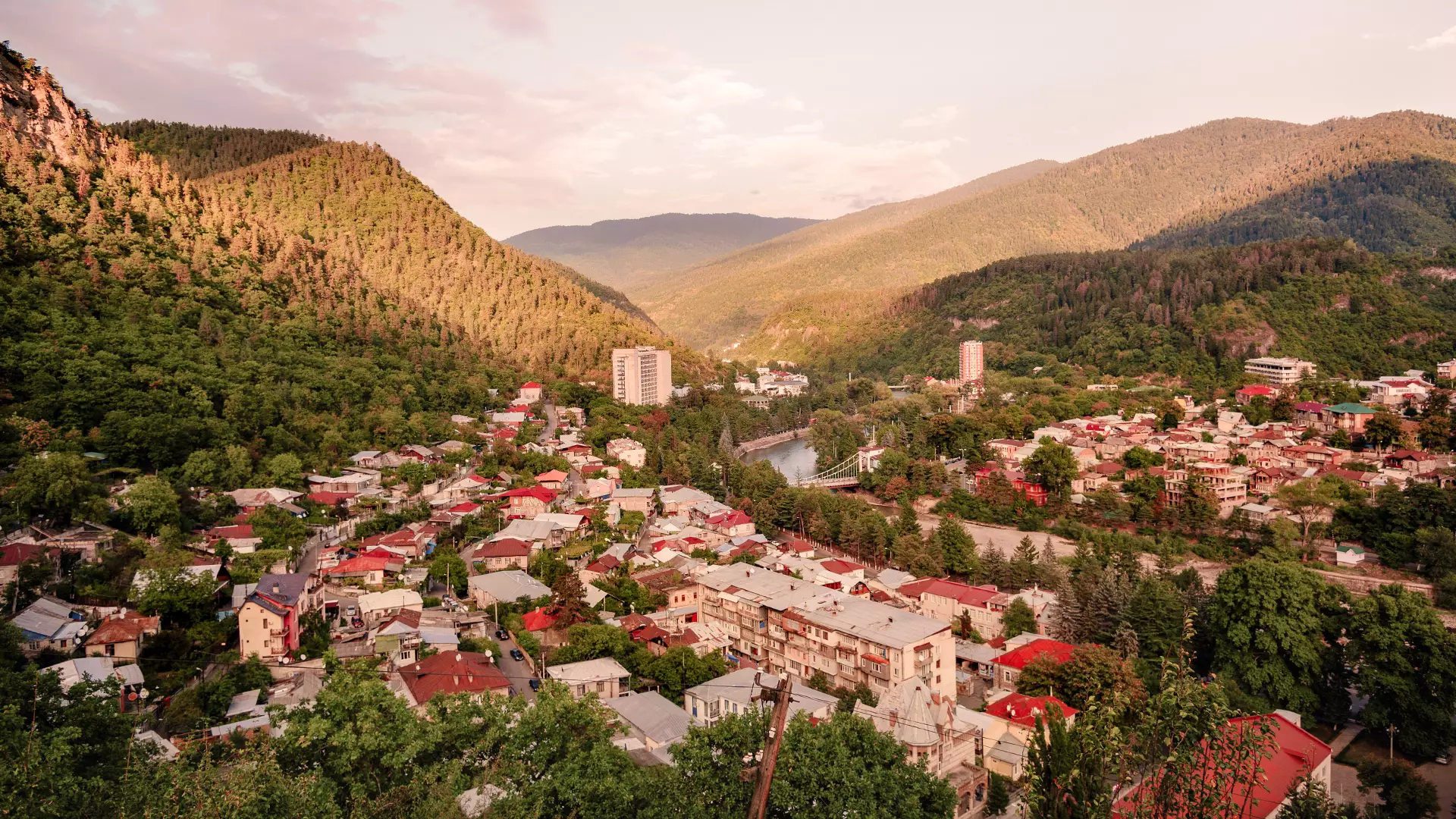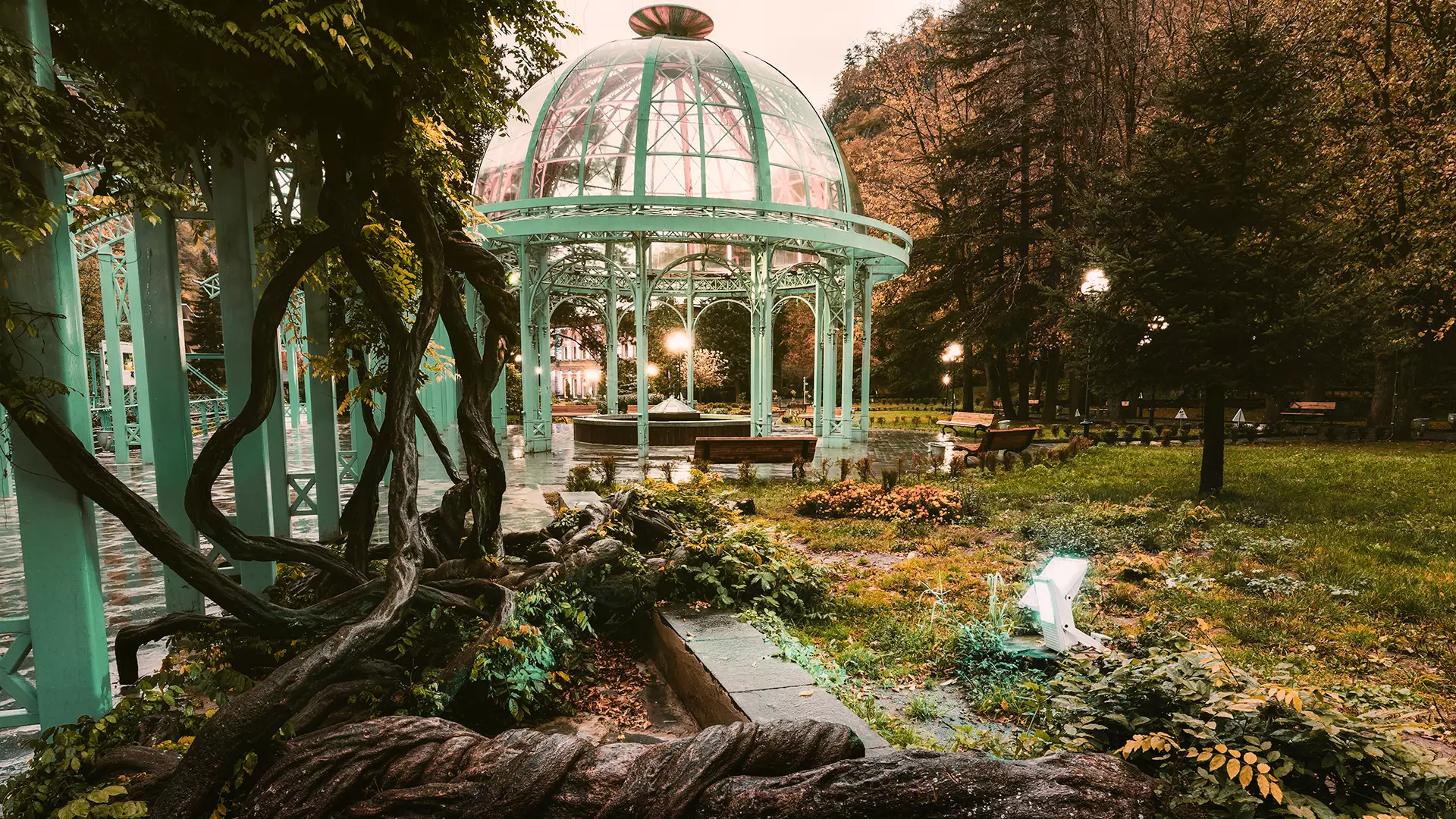Borjomi
What Will You Encounter in Borjomi?
Borjomi is a town of cold winters and long, hot summers. As a popular tourist destination, you’ll find a broad variety of accommodations, ranging from five-star hotels such as Crowne Plaza or Borjomi Likani to hostels and family-owned homestays.
The main draw of Borjomi is unquestionably its unique volcanic mineral waters, which have bubbled up to the surface from a depth of 9 to 10 kilometers for more than 1,500 years. This volcanic origin is said to be the source of the water’s purported healing properties.
The healing properties of Borjomi water can be enjoyed by both drinking and bathing, and it is used to treat diseases of the stomach, liver, gallbladder, kidneys, endocrine system, and even helps to treat obesity.
Bathing in Borjomi’s waters in pearl baths, mineral showers, or scented baths is said to treat diseases of the bones and joints, circulatory system, and respiratory system. In addition, a good soak in Borjomi water is said to have rejuvenating, revivifying, and soothing effects.
Borjomi is surrounded by smaller resort destinations such as Akhaldaba, Tsaghveri, Tsemi, Likani, Patara Tsemi, Bakuriani, and Tsikhisjvari - all of which offer their own treatments and recreation options.
What Is There to See in Borjomi?
While many come for the water, it is Borjomi’s historic park that leaves a lasting impression. Nestled deep within the evergreen forests that cling to the steep walls of the valley, Borjomi Park offers a welcome reprieve from the summer heat. While away the afternoon on the benches in the shadow of centuries-old trees, take your kids to rides or a playground, have a break in a cafe and of course, taste Borjomi water from the mineral spring. It won't be bubbly, but it's as beneficial as the bottled one.
Ekaterine Spring is perhaps the park’s most beloved attraction, with tourists from across Georgia coming to drink from the spring that helped to put Borjomi on the map.
The first Borjomi bottling plant was built in 1890, and you can see the historical building once you enter the park, on your left. Throughout the centuries, production increased and expanded. At the moment, the biggest Borjomi factory is located on the outskirts of the town.
If you follow the marked path through the park and into the forest beyond, you’ll find unique sulfur pools, which are used to treat some diseases. If you’ve ever wanted to soak in a natural mineral spring surrounded by the serenity of nature, it is worth the two and a half kilometer walk from Borjomi Park. Don't forget to take a swimsuit and towel with you! The changing cabins will be available on spot.
Another popular activity in Borjomi Park is to take the cable car located at the entrance of the park up to the cliffs that overlook the city. From here, Borjomi and the surrounding nature spreads out before you like a tapestry, and you can enhance this view by riding the Ferris Wheel or enjoying a cup of coffee in nearby cafes.
This region also has a rich history. The medieval architectural monuments, Petre Fortress and Gogia Fortress are preserved in the area. Near Borjomi, you can also visit Timotesubani Monastery, which is notable for its unique architecture and frescos.
About two kilometers away from Borjomi you will also find St. George Monastery. The locals call it the Green Monastery owing to the fact that it's surrounded by a peaceful green forest. Don’t forget to bring your camera!
For outdoor enthusiasts, Borjomi-Kharagauli National Park is a must on any Georgian itinerary. It is the perfect place for hiking, camping, picnicking, birdwatching, or just soaking in the serenity of the unspoiled wilderness.
Consider visiting Tabatskuri, a village 60 kilometers from Borjomi, built on a peninsula jutting into a beautiful lake that shares its name. Nearby Kakhisi Lake is also a popular camping location.
If you love history, then you will be interested in the more than 40,000 objects preserved in the Borjomi Museum of Local Lore, one of the oldest museums in Georgia. The building that the museum is in was constructed in 1890 by the German engineer W. Schweier for the state administration of the Romanovs, the Russian imperial family.
Once you are in Borjomi, you will notice that the architecture is different from that of other cities in Georgia. Some examples of Borjomi’s unique architecture are the Geological House; the narrow-gauge railway together with the cute, old-school "cuckoo train", and Eiffel Bridge, which you will encounter on the road between Tsaghveri and Tsemi. The bridge was commissioned by Michael Romanov to be built by Gustave Eiffel, the creator of the iconic tower in Paris.
Close to Borjomi is a sight you should not miss - Likani Palace, which was the royal summer residence during the Russian imperial period. A remarkable architectural landmark, it was the reason to build the first hydroelectric plant in the whole empire: the palace and garden needed light!
In the Soviet times, Likani Palace was a vacation home for Stalin and the Soviet brass.
When you come to Borjomi, you will understand why the kings and Soviet leaders chose this place for their vacations. It is one of Georgia’s most picturesque towns with great air, and it definitely deserves a visit.
Cookie Policy



